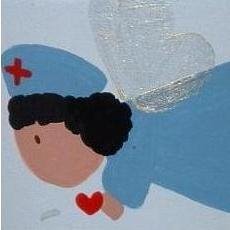No visas yet for US-bound nurses
Lourdes Santos Tancinco
INQUIRER.net
December 14, 2007
PRESIDENT BUSH recently vetoed the Labor HHS Education Appropriation Act of 2008 which was passed by Congress. This bill addresses the needs and priorities of the American people in the field of health care. There are many adverse effects of his decision which includes, among others, the failure to pass the home heating assistance for 1.5 million American families through a Low Income Home Energy Assistance Program.
Critical shortage
Unknown to many, there are immigration related advocacy groups that believe this veto is an indication that additional visas for registered nurses may be re-incorporated again should the bill go back to Congress for amendment. If this piece of immigrant provision is successfully incorporated, then there would be hope again for US-bound registered nurses.
The US is suffering from a critical shortage of registered nurses and other health care workers. There may be several reasons attributed to this shortage. Retiring baby boomers, a good portion of working physicians and nurses, will considerably deplete the labor force starting in the next three to five years. Moreover, medical and nursing schools are not producing enough new graduates to meet demand.
But this diminishing pipeline is not necessarily due to a lack of interested local candidates. Applications to nursing programs have been rising, but the number of students being denied admission has grown six-fold since 2002, according to a study made by the PwC Health Research Institute.
According to the study, the total number of registered nurses has increased by 75 percent since 1980, but will begin to decline in 2010, the first decrease in decades.
Perhaps the biggest reason for this is that nursing schools cannot hire enough faculty members to develop their programs since universities have few financial incentives to do so. Moreover, while hospitals receive significant federal funding for medical education, they are not similarly subsidized for training nurses.
RP top supplier of nurses
It’s undeniable that many incentives are provided by Federal and state governments to increase the number of nurses in the field. However, the solution often taken is the recruitment of foreign nurses. The Philippines is one of the top suppliers of nurses.
Even if there is a shortage of registered nurses, no visas are being issued by the US State Department or Citizenship and Immigration Services. There is what you call a lack of allocated visas for this type of occupation or “retrogression.”
All visas for ’06 used
The quota system for issuance of US visas caused this retrogression of priority dates. In a given year, only 140,000 visas are allocated for all employment-based petitions. Only 70,000 are allocated under the third employment-based preference. Aside from the numerical limit set by Congress on the issuance of visas, the State Department also follows a per country limit. Each country may not avail of more than 7 percent of what is allocated for each preference category.
All the 70,000 visas for 2006 fiscal year have been issued. In 2006, another 50,000 visas were added by Congress but even these 50,000 were all used by Nov. 1, 2006, resulting in further retrogression.
The visa bulletin for the month of December 2007 shows that there is still retrogression and that the petitions approved on Sept. 1, 2002 are the ones being issued visas. Eligible RN candidates may still be beneficiaries of petitions but they have to wait for their priority dates to be current, or for new legislation to add more visas to their category.
While the NCLEX is now available in the Philippines and there is an increase in the number of nurses who graduated from reputable universities, the fact remains that no visas are yet being issued to allow the nurses to reside and work in the United States.
Retrogression
The exception among those suffering from retrogression are those who filed their petitions and adjustment of status before November 2006, and those who filed between July 17 and Aug. 31, when the State Department declared excess visas.
Others who were not able to file are waiting for their priority dates to become current. This will happen when the retrogression is lifted and additional visas are declared available through new legislation.
The HHS bill (HR 3043) contained that immigration provision but it was stricken off by Congress during conference and now this bill was vetoed by President Bush. What is the likelihood that a new immigration provision adding more visas for registered nurses is passed this year? I am disheartened with the current legislative trend, especially with the election year coming up, but I remain hopeful.










1 comments:
hello there,
Id like to ask if my 2nd degree cousins could petition me in America. They are registered nurses and they are immigrants of America. Thank you.
Post a Comment